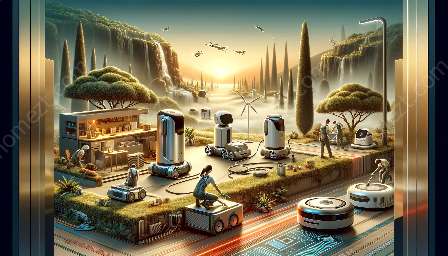Efficiency and energy-saving technologies have become crucial in today's world to reduce environmental impact and lower operational costs. When it comes to robotic cleaners, the implementation of these technologies can lead to a more sustainable and economical solution for various cleaning tasks.
Energy-Saving Technologies
Energy-saving technologies in robotic cleaners aim to optimize power consumption without compromising performance. One of the key advancements in this area is the use of intelligent sensors and algorithms that enable the robotic cleaners to adapt their cleaning patterns based on the environment. These sensors can detect obstacles, optimize cleaning routes, and avoid unnecessary energy consumption.
In addition, the use of advanced battery technologies, such as lithium-ion batteries, allows robotic cleaners to operate for longer periods on a single charge. This not only increases efficiency but also reduces the overall energy consumption associated with frequent recharging.
Efficiency Improvement
Efficiency in robotic cleaners is not limited to energy consumption. It also encompasses the overall performance and effectiveness of the cleaning process. Advanced brushless motors and suction mechanisms are designed to maximize cleaning efficiency, ensuring that robotic cleaners can effectively remove dirt and debris from various surfaces with minimal energy input.
Moreover, the integration of machine learning and artificial intelligence enables robotic cleaners to learn and adapt to different cleaning scenarios over time. This adaptive learning capability ensures that the robotic cleaners become more efficient in their operation, leading to optimized energy usage and improved cleaning performance.
Integration with Energy Monitoring Systems
Robotic cleaners equipped with energy monitoring systems can provide real-time data on energy consumption and operational efficiency. This information allows users to track and analyze the energy usage of the robotic cleaners, identifying areas for further optimization and potential cost savings.
Environmental Benefits
By integrating efficiency and energy-saving technologies, robotic cleaners contribute to environmental conservation by reducing overall energy consumption and carbon emissions. The use of sustainable materials in their construction further promotes eco-friendly cleaning solutions, aligning with the growing global emphasis on sustainability and energy conservation.
Conclusion
The convergence of efficiency and energy-saving technologies in robotic cleaners represents a significant step towards more sustainable and economical cleaning solutions. As these technologies continue to evolve, the potential for further improvements in energy efficiency and operational effectiveness in robotic cleaners is vast, offering a promising outlook for the future of automated cleaning systems.





















